
Arduino for Secret Agents
¥54.49
Transform your tiny Arduino device into a secret agent gadget to build a range of espionage projects with this practical guide for hackers About This Book Discover the limitless possibilities of the tiny Arduino and build your own secret agent projects From a fingerprint sensor to a GPS Tracker and even a robot– learn how to get more from your Arduino Build nine secret agent projects using the power and simplicity of the Arduino platform Who This Book Is For This book is for Arduino programmers with intermediate experience of developing projects, and who want to extend their knowledge by building projects for secret agents. It would also be great for other programmers who are interested in learning about electronics and programming on the Arduino platform. What You Will Learn Get to know the full range of Arduino features so you can be creative through practical projects Discover how to create a simple alarm system and a fingerprint sensor Find out how to transform your Arduino into a GPS tracker Use the Arduino to monitor top secret data Build a complete spy robot! Build a set of other spy projects such as Cloud Camera and Microphone System In Detail Q might have Bond’s gadgets– but he doesn’t have an Arduino (not yet at least). Find out how the tiny Arduino microcomputer can be used to build an impressive range of neat secret agent projects that can help you go undercover and get to grips with the cutting-edge of the world of espionage with this book, created for ardent Arduino fans and anyone new to the powerful device. Each chapter shows you how to construct a different secret agent gadget, helping you to unlock the full potential of your Arduino and make sure you have a solution for every tricky spying situation. You’ll find out how to build everything from an alarm system to a fingerprint sensor, each project demonstrating a new feature of Arduino, so you can build your expertise as you complete each project. Learn how to open a lock with a text message, monitor top secret data remotely, and even create your own Arduino Spy Robot, Spy Microphone System, and Cloud Spy Camera This book isn’t simply an instruction manual – it helps you put your knowledge into action so you can build every single project to completion. Style and approach This practical reference guide shows you how to build various projects with step-by-step explanations on each project, starting with the assembly of the hardware, followed by basics tests of all those hardware components and finally developing project on the hardware.
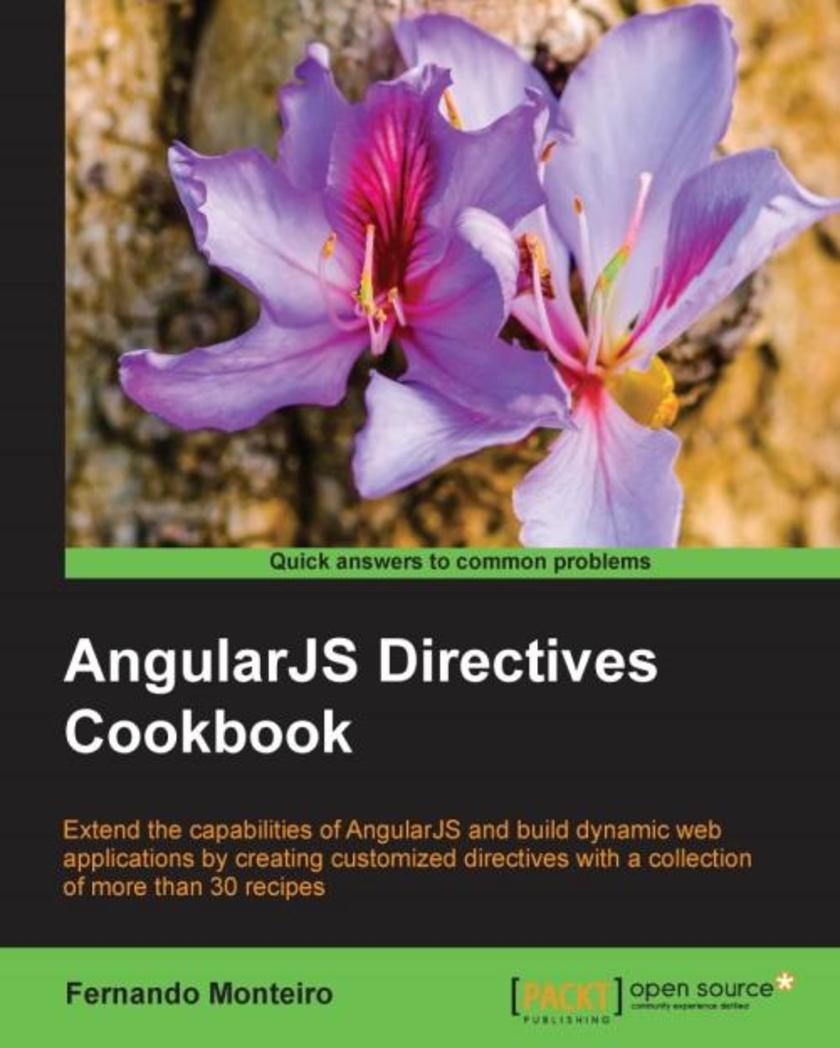
AngularJS Directives Cookbook
¥71.93
Extend the capabilities of AngularJS and build dynamic web applications by creating customized directives with this selection of more than 30 recipes About This Book Learn how to extend HTML templates in new ways to build even better web applications with exceptional interface components Build reusable directives for large-scale AngularJS applications Create even sophisticated and impressive modern web apps with ease Who This Book Is For This book is for developers with AngularJS experience who want to extend their knowledge to create or customize directives in any type of AngularJS application. Some experience of modern tools such as Yeoman and Bower would be helpful, but is not a requirement. What You Will Learn Build and customize external HTML templates, and create simple, effective directives for common interface components Learn how to use Controller function and any Bootstrap UI directives to manipulate the DOM and how to transform any UI library into AngularJS directives Construct an AngularJS application to use shared components and validate your HTML5 Discover how to use jQuery events and manipulate the DOM using jQuery UI inside AngularJS applications Create custom directives for ongoing projects using Yeoman generators, and find out how to implement standalone directives Build reusable directives for Large AngularJS applications and extend directives to use dynamic templates Write unit test for directives using the Karma runner and Jasmine’s behavior-driven development framework In Detail AngularJS directives are at the center of what makes it such an exciting – and important - web development framework. With directives, you can take greater control over HTML elements on your web pages – they ‘direct’ Angular’s HTML compiler to behave in the way you want it to. It makes building modern web applications a much more expressive experience, and allows you to focus more closely on improving the way that user interaction impacts the DOM and the way your app manages data. If you’re already using Angular, you probably recognize the power of directives to transform the way you understand and build your projects – but customizing and creating your own directives to harness AngularJS to its full potential can be more challenging. This cookbook shows you how to do just that – it’s a valuable resource that demonstrates how to use directives at every stage in the workflow. Packed with an extensive range of solutions and tips that AngularJS developers shouldn’t do without, you’ll find out how to make the most of directives. You’ll find recipes demonstrating how to build a number of different user interface components with directives, so you can take complete control over how users interact with your application. You’ll also learn how directives can simplify the way you work by creating reusable directives – by customizing them with Yeoman you can be confident that you’re application has the robust architecture that forms the bedrock of the best user experiences. You’ll also find recipes that will help you learn how to unit test directives, so you can be confident in the reliability and performance of your application. Whether you’re looking for guidance to dive deeper into AngularJS directives, or you want a reliable resource, relevant to today’s web development challenges, AngularJS Directives Cookbook delivers everything you need in an easily accessible way. Style and approach This book easy-to-follow guide is packed with hands-on recipes to help you build modular AngularJS applications with custom directives. It presents tips on using the best tools and various ways to use these tools for front-end development.
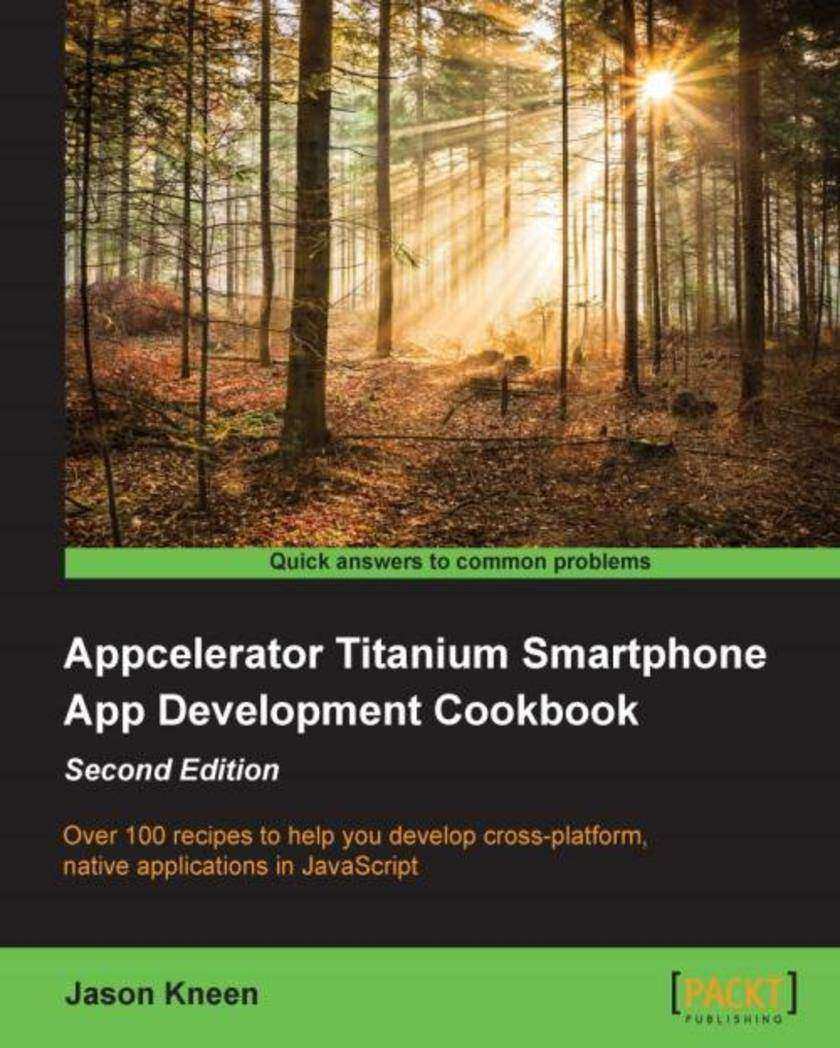
Appcelerator Titanium Smartphone App Development Cookbook - Second Edition
¥80.65
Over 100 recipes to help you develop cross-platform, native applications in JavaScript About This Book Leverage your JavaScript skills to write mobile applications using Titanium Studio tools with the native advantage Deploy your application on the App Store and Google Play Add your own IOS native modules in objective-C, in an easy-to-follow step-by-step format Who This Book Is For This book is an essential for any developer learning or using JavaScript who wants to write native UI applications for iOS and Android. No knowledge of Objective-C, Swift and Java is required and you’ll quickly be developing native, cross-platform apps, in JavaScript! What You Will Learn Transfer data between applications with URL schemes, and make your application accessible to other mobile applications and services Connect with remote services using JSON Work with Google Maps and Apple Maps, GPS and annotate routes Create animations and special effects Integrate notifications and connect with social media services such as Facebook and Twitter Build applications with Alloy MVC – a rapid application development framework Design native APIs and use local databases In Detail The mobile web has paved the way but many users want to have “native” applications installed. Using Appcelerator as a platform it’s now possible to write iOS, Android, and Windows phone applications in JavaScript! It allows developers to develop fully native UI applications using Appcelerator studio tools without any knowledge of Objective-C, Swift or Java. This book will take you through the process of building cross-platform, native UI applications for the mobile from scratch. You will learn how to develop apps, how to use GPS, cameras and photos and how to build socially connected apps. You will also learn how to package them for submission to the App Store and Google Play. This cookbook takes a pragmatic approach to creating applications in JavaScript from putting together basic UIs, to handling events and implementation of third party services such as Twitter, Facebook and Push notifications. The book shows you how to integrate datasources and server APIs, and how to use local databases. The topics covered will guide you to use Appcelerator Studio tools for all the mobile features such as Geolocation, Accelerometer, animation and more. You’ll also learn about Alloy, the Appcelerator MVC framework for rapid app development, and how to transfer data between applications using URLSchemes, enabling other developers to access and launch specific parts of your app. Finally, you will learn how to register developer accounts and publish your very own applications on the App Store and Google Play. Style and approach This book offers a set of practical recipes with a step-by-step approach for building native applications for both the iOS and Android using JavaScript. This hands-on guide shows you exactly how to use the Appcelerator platform to rapidly develop cross-platform, native apps.
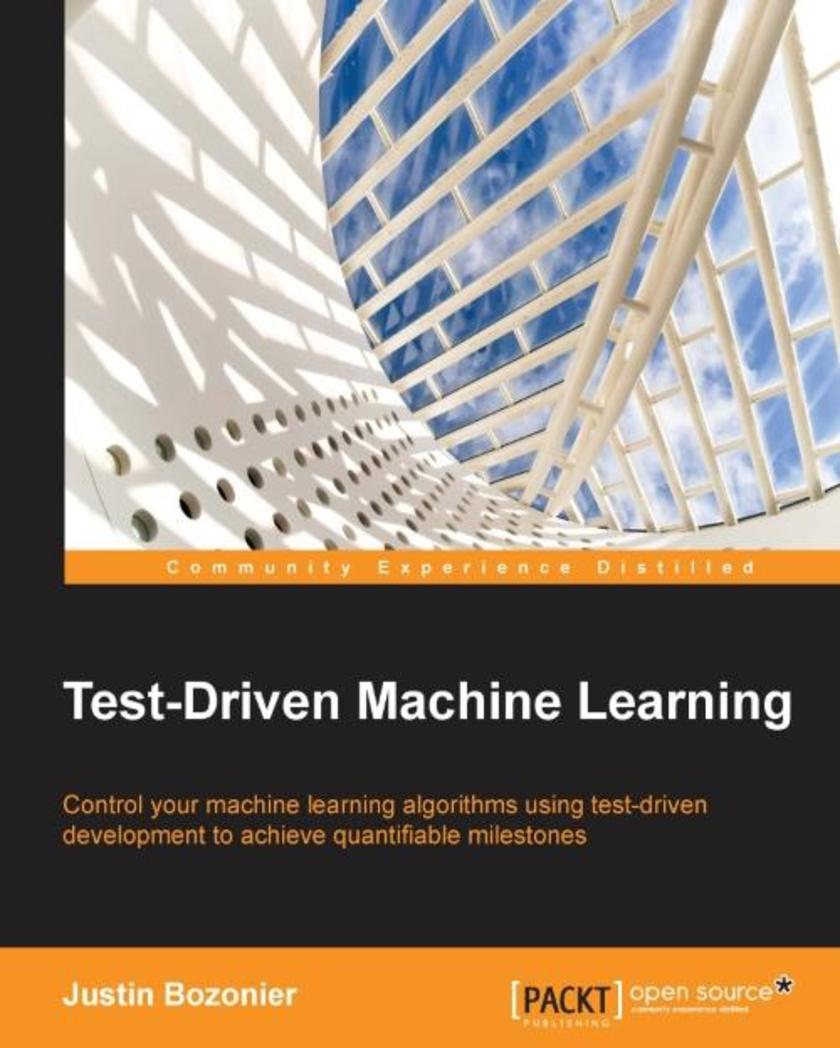
Test-Driven Machine Learning
¥71.93
Control your machine learning algorithms using test-driven development to achieve quantifiable milestones About This Book Build smart extensions to pre-existing features at work that can help maximize their value Quantify your models to drive real improvement Take your knowledge of basic concepts, such as linear regression and Na?ve Bayes classification, to the next level and productionalize their models Play what-if games with your models and techniques by following the test-driven exploration process Who This Book Is For This book is intended for data technologists (scientists, analysts, or developers) with previous machine learning experience who are also comfortable reading code in Python. You may be starting, or have already started, a machine learning project at work and are looking for a way to deliver results quickly to enable rapid iteration and improvement. Those looking for examples of how to isolate issues in models and improve them will find ideas in this book to move forward. What You Will Learn Get started with an introduction to test-driven development and familiarize yourself with how to apply these concepts to machine learning Build and test a neural network deterministically, and learn to look for niche cases that cause odd model behaviour Learn to use the multi-armed bandit algorithm to make optimal choices in the face of an enormous amount of uncertainty Generate complex and simple random data to create a wide variety of test cases that can be codified into tests Develop models iteratively, even when using a third-party library Quantify model quality to enable collaboration and rapid iteration Adopt simpler approaches to common machine learning algorithms Take behaviour-driven development principles to articulate test intent In Detail Machine learning is the process of teaching machines to remember data patterns, using them to predict future outcomes, and offering choices that would appeal to individuals based on their past preferences. Machine learning is applicable to a lot of what you do every day. As a result, you can’t take forever to deliver your first iteration of software. Learning to build machine learning algorithms within a controlled test framework will speed up your time to deliver, quantify quality expectations with your clients, and enable rapid iteration and collaboration. This book will show you how to quantifiably test machine learning algorithms. The very different, foundational approach of this book starts every example algorithm with the simplest thing that could possibly work. With this approach, seasoned veterans will find simpler approaches to beginning a machine learning algorithm. You will learn how to iterate on these algorithms to enable rapid delivery and improve performance expectations. The book begins with an introduction to test driving machine learning and quantifying model quality. From there, you will test a neural network, predict values with regression, and build upon regression techniques with logistic regression. You will discover how to test different approaches to na?ve bayes and compare them quantitatively, along with how to apply OOP (Object-Oriented Programming) and OOP patterns to test-driven code, leveraging SciKit-Learn. Finally, you will walk through the development of an algorithm which maximizes the expected value of profit for a marketing campaign by combining one of the classifiers covered with the multiple regression example in the book. Style and approach An example-driven guide that builds a deeper knowledge and understanding of iterative machine learning development, test by test. Each topic develops solutions using failing tests to illustrate problems; these are followed by steps to pass the tests, simply and straightforwardly. Topics which use generated data explore how the data was generated, alongside explanations of the assumptions behind different machine learning techniques.
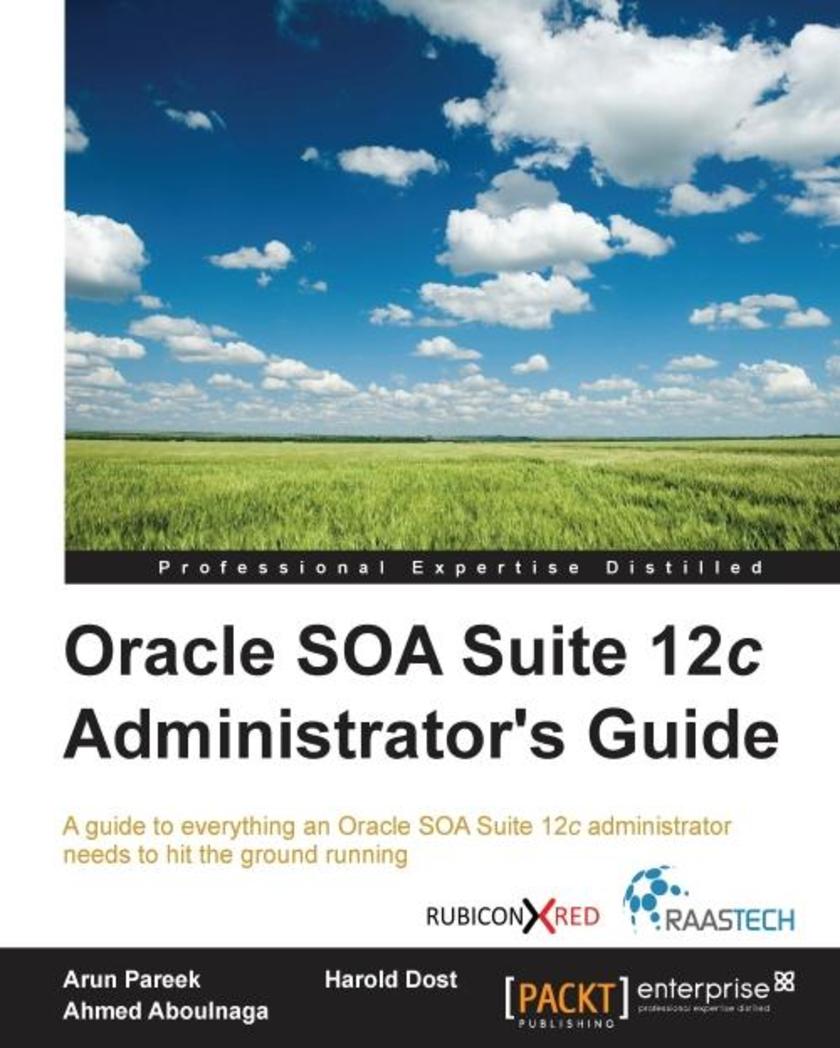
Oracle SOA Suite 12c Administrator's Guide
¥107.90
A guide to everything an Oracle SOA Suite 12c administrator needs to hit the ground running About This Book Understand core administrative tasks such as deployments, purging, startup and shutdown, configuration, and backup and recovery Manage, monitor, and troubleshoot SOA composites and OSB services Follow step-by-step instructions to easily and quickly install a highly available two-node cluster Who This Book Is For With topic areas ranging from the simple to the complex, this book is intended for novice, mid-level, and experienced administrators of the Oracle SOA Suite 12c platform as well as Oracle WebLogic Server and Oracle Database administrators interested in diving into the product. What You Will Learn Navigate Oracle Enterprise Manager Fusion Middleware Control Monitor and manage the Oracle SOA Suite 12 c infrastructure Deploy and promote code Monitor and manage services Configure and administer the environment Manage the dehydration store and enterprise scheduler service Troubleshoot Oracle SOA Suite 12c infrastructure Set up backups, recovery, and high availability In Detail Oracle SOA Suite 12 c is the most comprehensive and integrated infrastructure on the market today that is used for building applications based on service-oriented architecture. With the vast number of features and capabilities that Oracle SOA Suite 12c has to offer comes numerous complexities and challenges for administration. Oracle SOA Suite 12c Administrator's Guide covers all the core areas of administration needed for you to effectively manage and monitor the Oracle SOA Suite environment and its transactions, from deployments, to monitoring, to performance tuning, and much, much more. Manage, monitor, and troubleshoot SOA composites and OSB services from a single product set. Understand core administrative activities such as deployments, purging, startup and shutdown, configuration, backup, and recovery. Also learn about new features such as Oracle Enterprise Scheduler, lazy loading, work manager groups, high availability, and more. Style and approach Presented in a reference guide format where chapters can be read in any sequence, this book explains the core concepts while providing real-world implementation specifics, detailing the what, why, and how of all the administration-related activities that involve Oracle SOA Suite 12c. We take a step-by-step approach and offers tips, instructions, and examples that you can easily follow and execute.
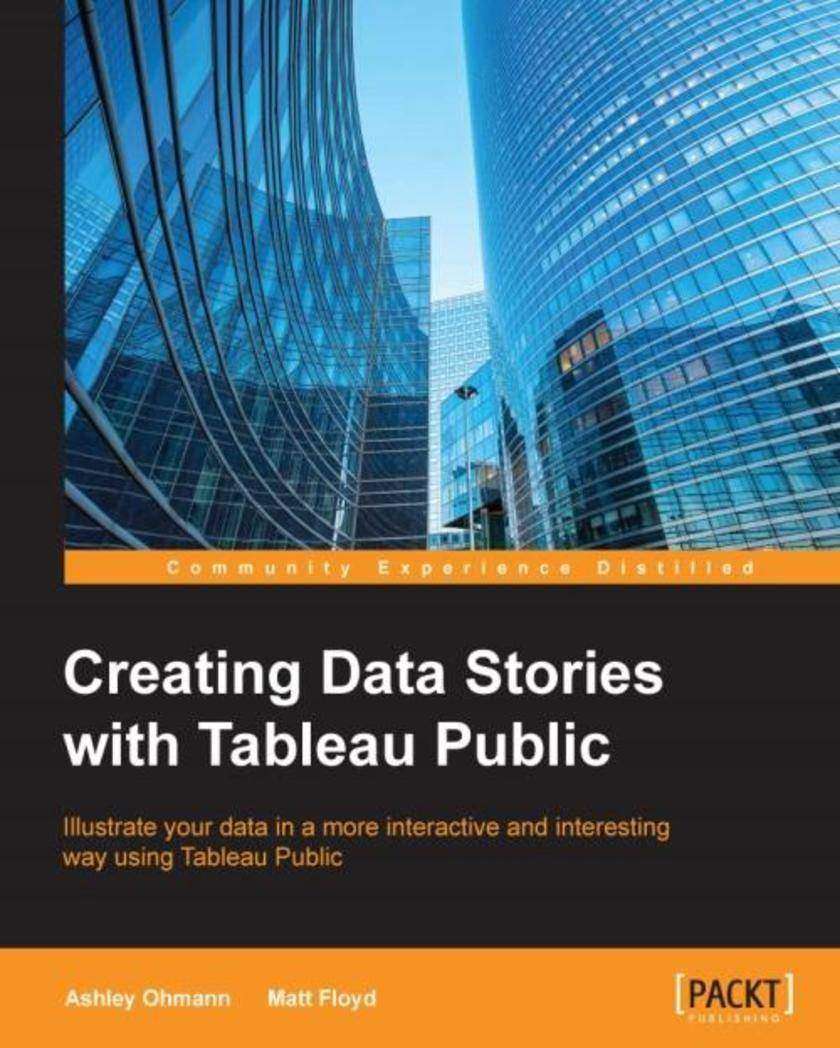
Creating Data Stories with Tableau Public
¥63.21
Illustrate your data in a more interactive and interesting way using Tableau Public About This Book Learn the basics of creating visualizations with Tableau using this concise reference book Understand how to join and aggregate your data sources using Tableau It is a step by step guide that uses examples to help you understand the key concepts and feature of Tableau Public Who This Book Is For This book is targeted at investigative journalists and bloggers with an interest in making rich and interactive data visualizations. Intermediate Tableau Public users and organizations can also use this book as a reference guide and teaching aid. Members of the media team, such as data specialists, web developers, editors, producers, and managers can also benefit from an understanding of the structure and challenges of writing an interactive and interesting data visualization using Tableau Public. What You Will Learn Connect to various data sources and understand what data is appropriate for Tableau Public Understand chart types and when to use specific chart types with different types of data Join and aggregate data for use in Tableau Public data stories Discover features of Tableau Public, from basic to advanced Involve calculations in Tableau Public Build geographic maps to bring context to data Create dashboards from one or more separate data visualizations Create filters and actions to allow greater interactivity to Tableau Public visualizations and dashboards Publish and embed Tableau visualizations and dashboards in articles In Detail Tableau Public is a very useful tool in anyone's data reporting toolbox that allows authors to add an interactive data element to any article. It allows investigative journalists and bloggers to tell a “data story”, allowing others to explore your data visualization. The relative ease of Tableau Public visualization creation allows data stories to be developed rapidly. It allows readers to explore data associations in multiple-sourced public data, and uses state-of-the-art dashboard and chart graphics to immerse the users in an interactive experience. This book offers investigative journalists, bloggers, and other data story tellers a rich discussion of visualization creation topics, features, and functions. This book allows data story tellers to quickly gain confidence in understanding and expanding their visualization-creation knowledge, and allows them to quickly create interesting, interactive data visualizations to bring a richness and vibrancy to complex articles. The book takes you from basic concepts in visualization creation, like connecting to data sources, cleansing data, chart types, common functions, map creation, and publishing to the Web, to more advanced functions. It is a great overview and reference guide for beginner to intermediate Tableau Public data story tellers, and covers creation of Tableau Public visualizations of varying complexities. Style and approach This book is a crisp, systematic, and tutorial-styled guide to building interactive Tableau visualizations.
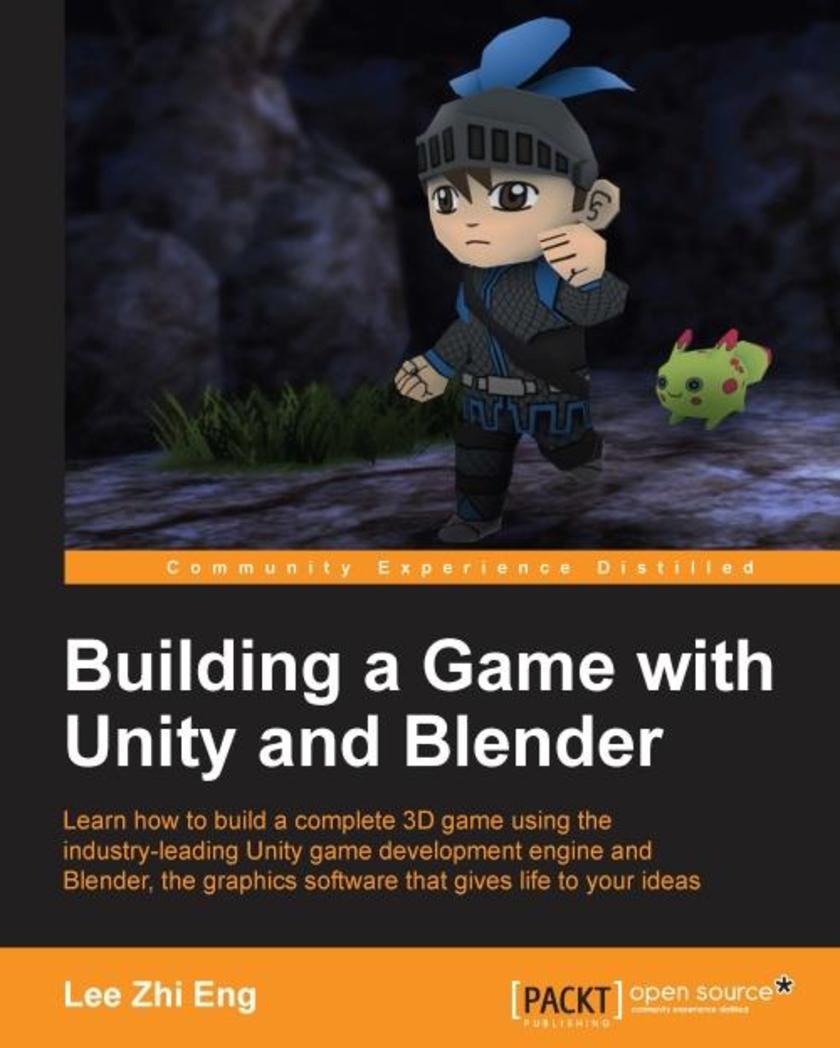
Building a Game with Unity and Blender
¥80.65
Learn how to build a complete 3D game using the industry-leading Unity game development engine and Blender, the graphics software that gives life to your ideas About This Book Learn the fundamentals of two powerful tools and put the concepts into practice Find out how to designand buildall the core elements required for a great game - from characters to environments, to props— Learn how to integrate Artificial Intelligence (AI) into your game for sophisticated and engaging gameplay Who This Book Is For This book has been created for anyone who wants to learn how to develop their own game using Blender and Unity, both of which are freely available, yet very popular and powerful, tools. Not only will you be able to master the tools, but you will also learn the entire process of creating a game from the ground up. What You Will Learn Design and create a game concept that will determine how your game will look and how it will be played Construct 3D models of your game characters and create animations for them before importing them into the game Build the game environment from scratch by constructing the terrain and props, and eventually put it all together to form a scene Import and integrate game assets created in Blender into Unity—for example, setting up textures, materials, animation states, and prefabs Develop game structures including a game flow, user interface diagram, game logic, and a state machine Make the game characters move around and perform certain actions either through player inputs or fully controlled by artificial intelligence Create particles and visual effects to enhance the overall visual aesthetic Deploy the game for various types of platforms In Detail In the wake of the indie game development scene, game development tools are no longer luxury items costing up to millions of dollars but are now affordable by smaller teams or even individual developers. Among these cutting-edge applications, Blender and Unity stand out from the crowd as a powerful combination that allows small-to-no budget indie developers or hobbyists alike to develop games that they have always dreamt of creating. Starting from the beginning, this book will cover designing the game concept, constructing the gameplay, creating the characters and environment, implementing game logic and basic artificial intelligence, and finally deploying the game for others to play. By sequentially working through the steps in each chapter, you will quickly master the skills required to develop your dream game from scratch. Style and approach A step-by-step approach with tons of screenshots and sample code for readers to follow and learn from. Each topic is explained sequentially and placed in context so that readers can get a better understanding of every step in the process of creating a fully functional game.
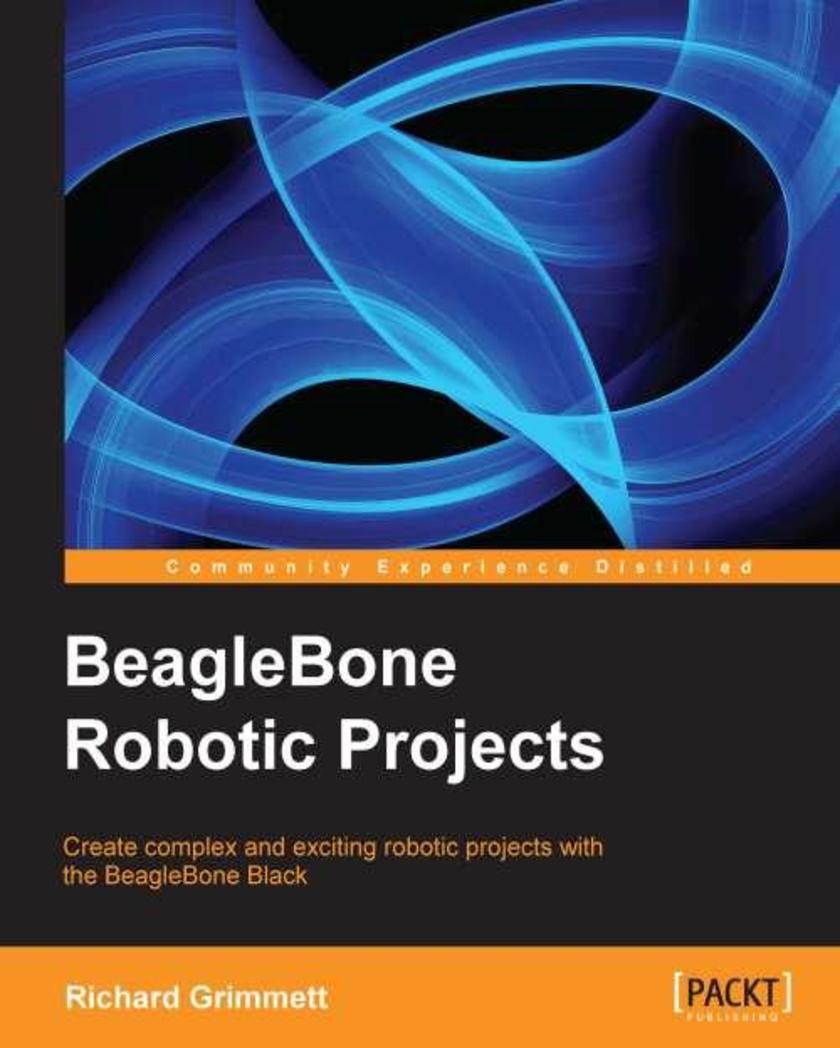
BeagleBone Robotic Projects
¥80.65
Develop practical example projects with detailed explanations; combine the projects in a vast number of ways to create different robot designs, or work through them in sequence to discover the full capability of the BeagleBone Black.This book is for anyone who is curious about using new, low-cost hardware to create robotic projects that have previously been the domain of research labs, major universities or Defence departments. Some programming experience would be useful, but if you know how to use a personal computer, you can use this book to construct far more complex systems than you would have thought possible.
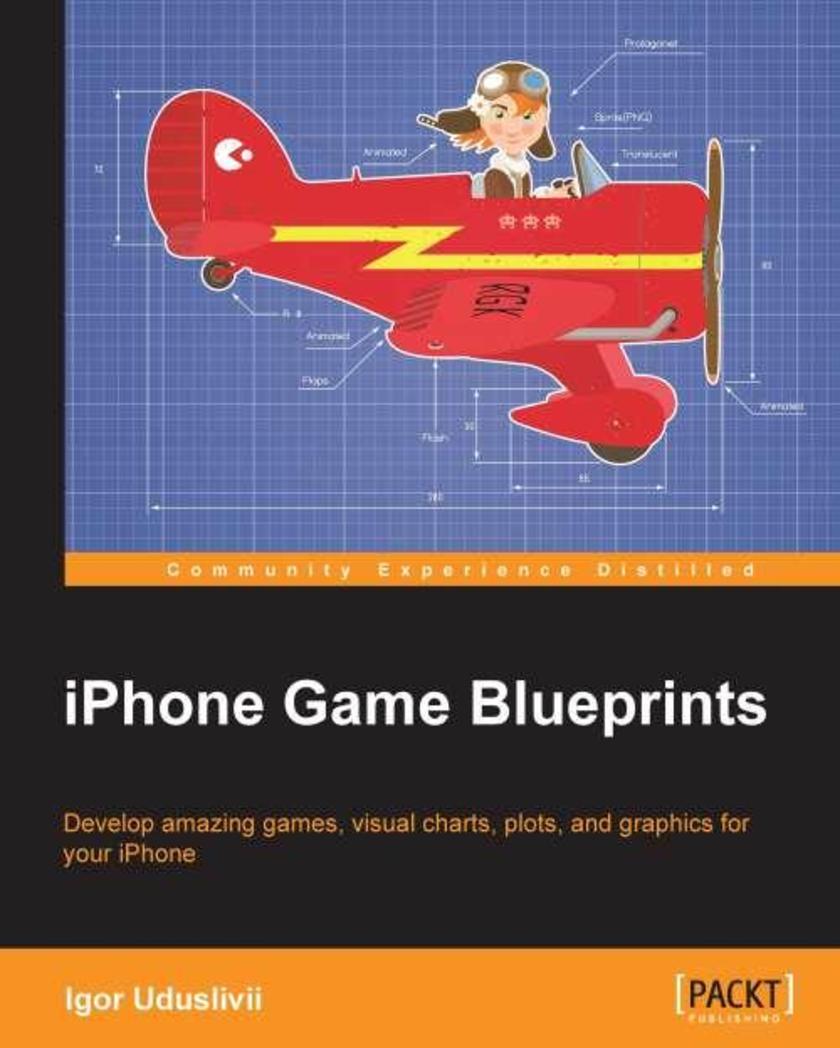
iPhone Game Blueprints
¥90.46
iPhone Game Blueprints is a practical, hands-on guide with step-by-step instructions leading you through a number of different projects, providing you with the essentials for creating your own iPhone games.This book is for graphic designers, developers, illustrators, and simple enthusiasts, who dream about the creation of mobile games or who have already worked in that domain, but need some additional inspiration and knowledge. This book can be considered as an illustrated handbook, worth having in your game development studio. It can work as a “paper art-director” for your project.

OpenGL 4 Shading Language Cookbook, Second Edition
¥99.18
OpenGL Shading Language 4 Cookbook is a hands-on guide that gets straight to the point – actually creating graphics, instead of just theoretical learning. Each recipe is specifically tailored to satisfy your appetite for producing real-time 3-D graphics using the latest GLSL specification.This book is for OpenGL programmers looking to use the modern features of GLSL 4 to create real-time, three-dimensional graphics. Familiarity with OpenGL programming, along with the typical 3D coordinate systems, projections, and transformations is assumed. It can also be useful for experienced GLSL programmers who are looking to implement the techniques that are presented here.

Microsoft Tabular Modeling Cookbook
¥99.18
This book follows a cookbook style with recipes explaining the steps for developing analytic data using Business Intelligence Semantic Models.This book is designed for developers who wish to develop powerful and dynamic models for users as well as those who are responsible for the administration of models in corporate environments. It is also targeted at analysts and users of Excel who wish to advance their knowledge of Excel through the development of tabular models or who wish to analyze data through tabular modeling techniques. We assume no prior knowledge of tabular modeling
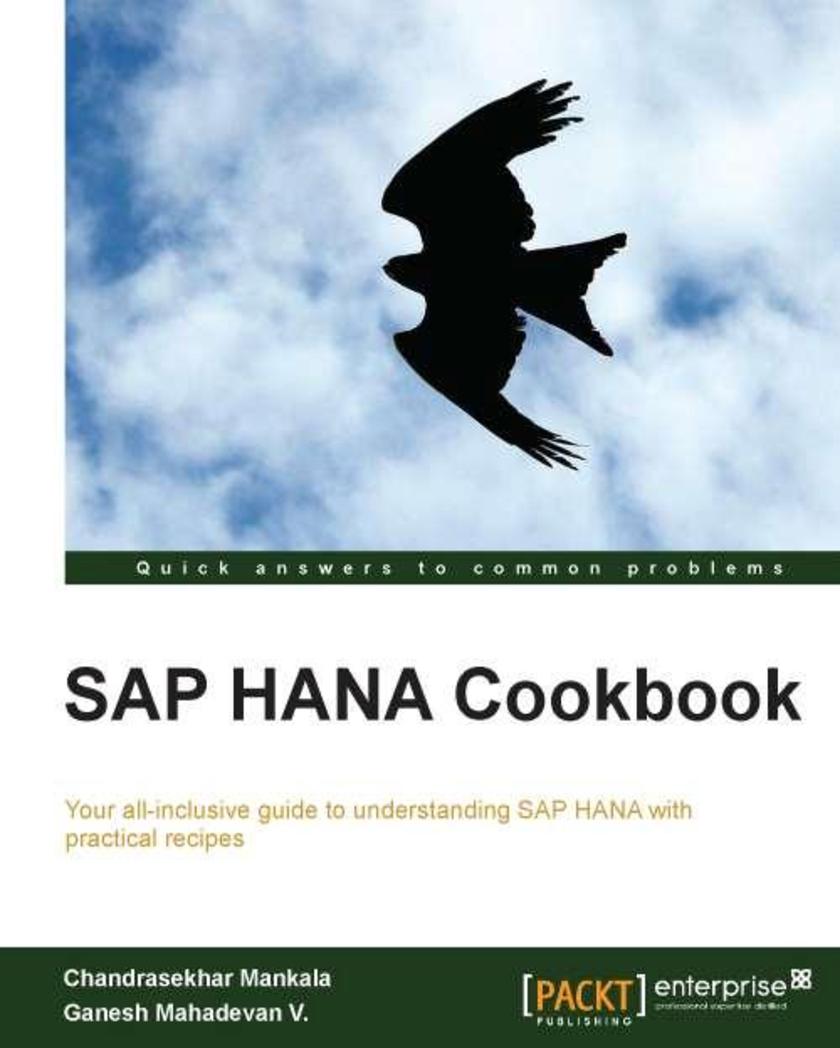
SAP HANA Cookbook
¥90.46
An easy-to-understand guide, covering topics using practical scenarios and live examples, and answering all possible questions.If you are a solution architect, developer, modeler, sales leader, business transformation managers, directors, COO, or CIO; this book is perfect for you. If you are interested in other technologies and want to jump-start into SAP, this book gives you the chance to learn SAP HANA. Basic knowledge of RDBMS concepts enough is to get you started.
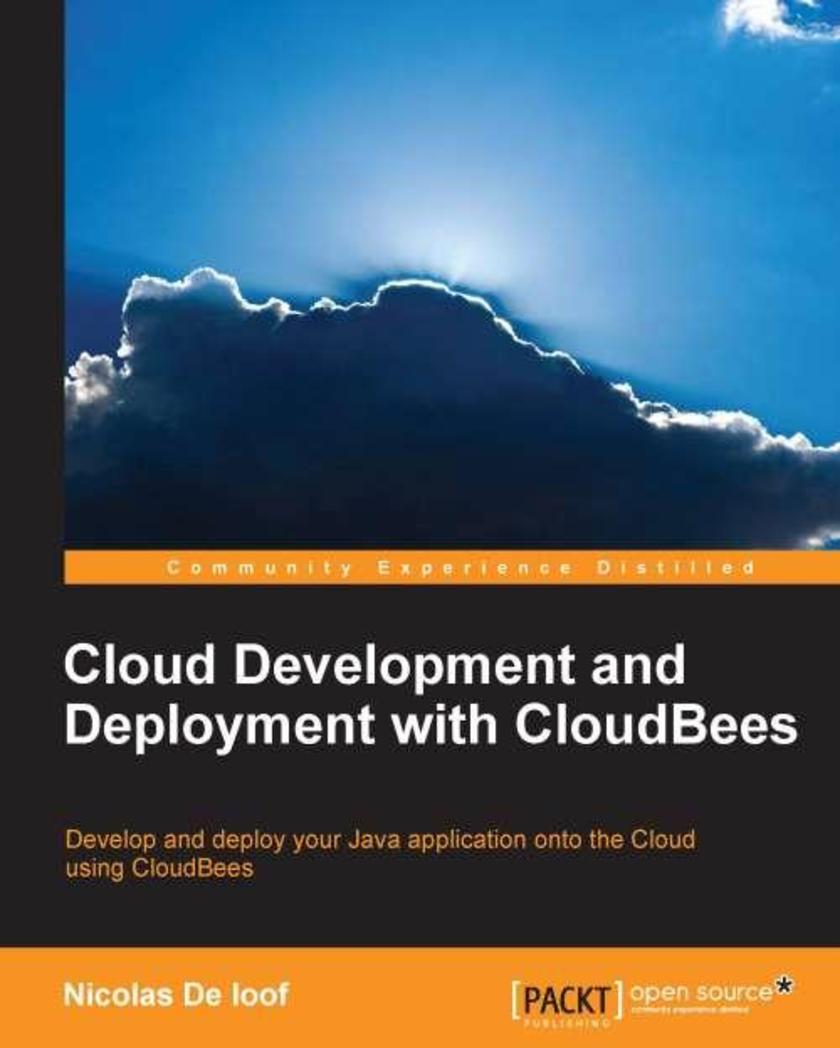
Cloud Development and Deployment with CloudBees
¥63.21
This is an easy-to-follow yet comprehensive guide that follows a step-by-step approach to leverage the CloudBees services.If you are a Java developer and want to explore the world of the cloud, this book is ideal for you. This book will guide you through the process of developing and deploying an application on the cloud. Prior knowledge of Java is essential.
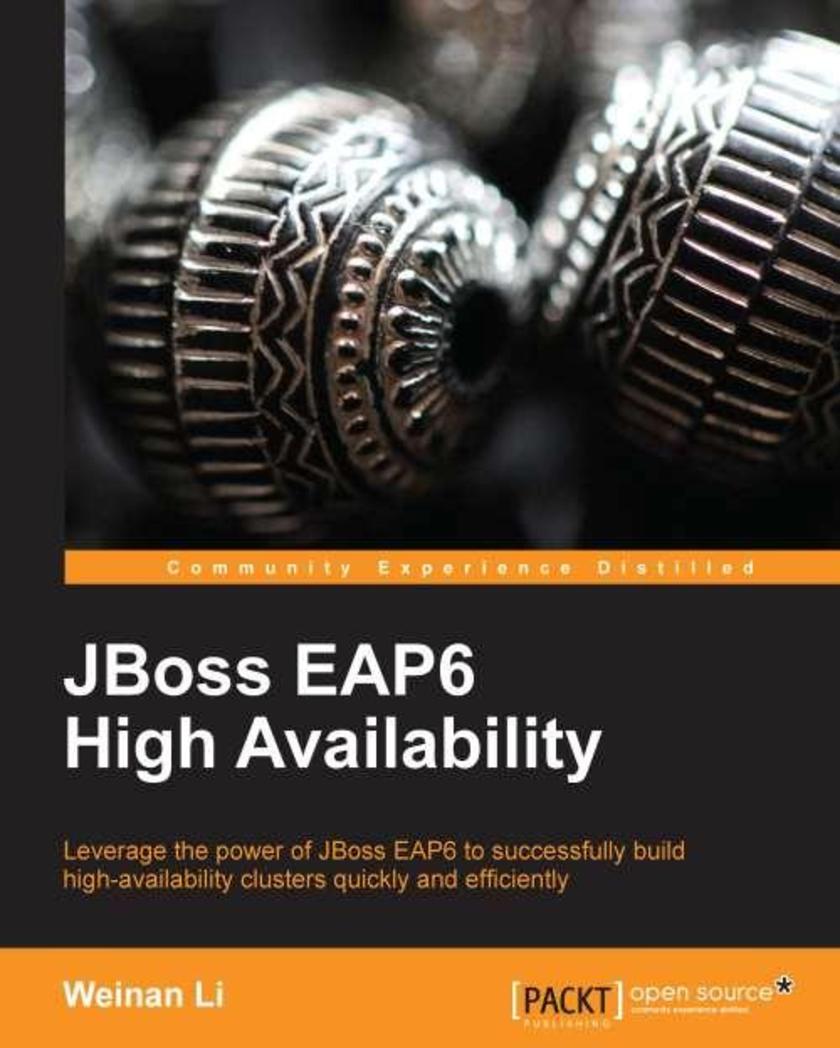
JBoss EAP6 High Availability
¥71.93
An easy-to-follow guide full of hands-on examples of real-world administration tasks.JBoss EAP6 High Availability is ideal for those who want to learn how to use JBoss EAP6 to set up a cluster. Basic knowledge of Linux/Unix is required.

Asynchronous Android
¥71.93
Concurrent Programming on Android is a step-by-step guide that builds a complete picture of the concurrency constructs available on the Android platform.This book is for Android developers who want to learn about the advanced concepts of Android programming. No prior knowledge of concurrency and asynchronous programming is required. This book is also targeted towards Java experts who are new to Android.
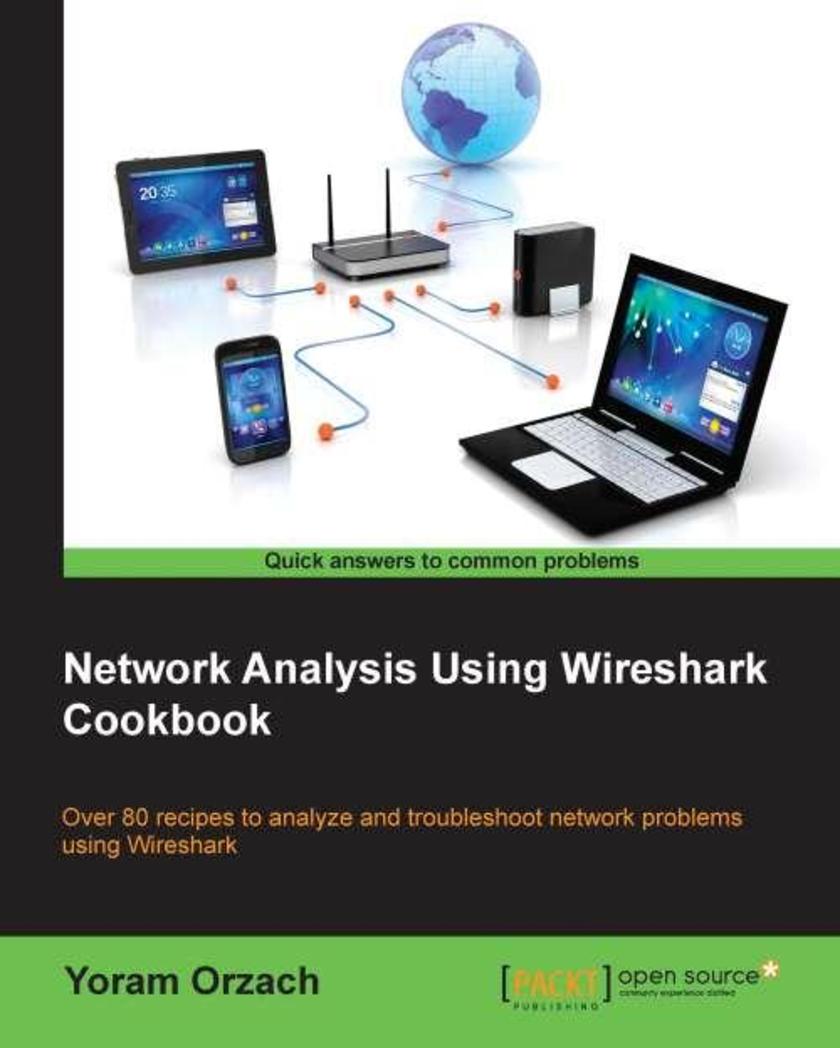
Network Analysis using Wireshark Cookbook
¥90.46
Network analysis using Wireshark Cookbook contains more than 100 practical recipes for analyzing your network and troubleshooting problems in the network. This book provides you with simple and practical recipes on how to solve networking problems with a step-by-step approach.This book is aimed at research and development professionals, engineering and technical support, and IT and communications managers who are using Wireshark for network analysis and troubleshooting. This book requires a basic understanding of networking concepts, but does not require specific and detailed technical knowledge of protocols or vendor implementations.
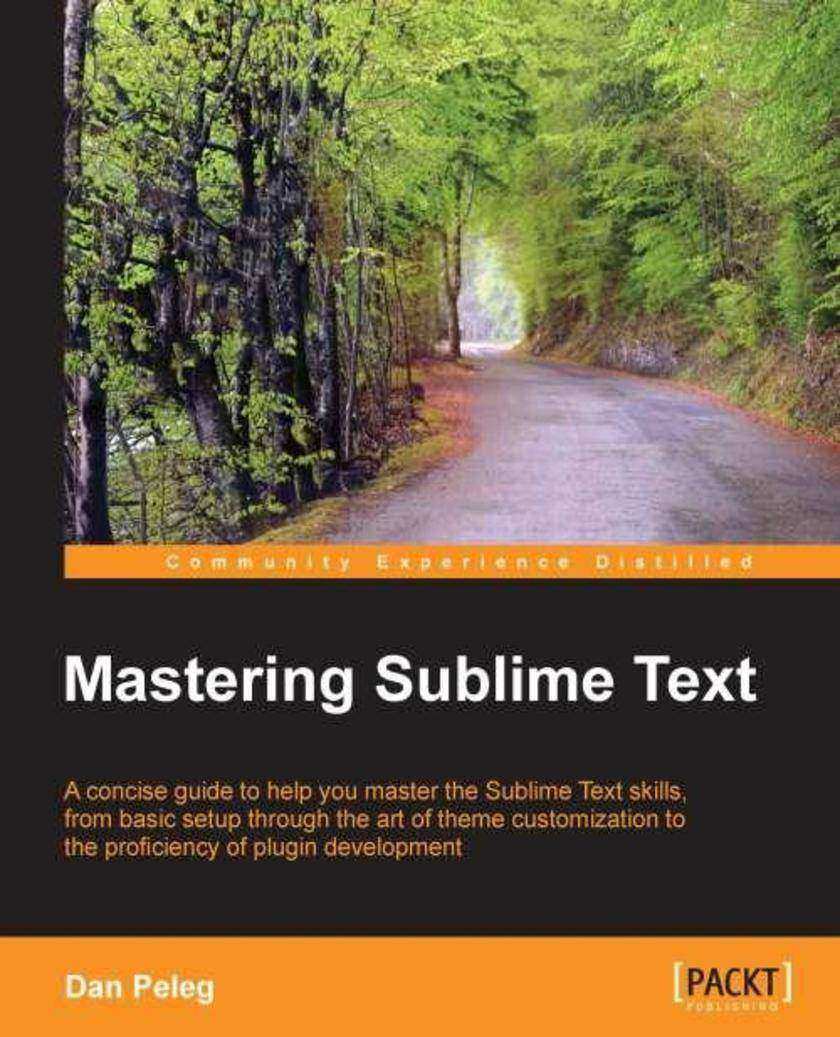
Mastering Sublime Text
¥54.49
Mastering Sublime Text is an easy-to-understand, step-by-step guide for learning all of the features of Sublime Text, including author tips and tricks. Every topic includes code examples and highlighted screenshots to make it easier to understand.This book is for developers with experience in any type of programming language, and for those who want to start using Sublime Text or perfect their existing skills. No knowledge of Sublime Text or any other code editor or IDE is expected.
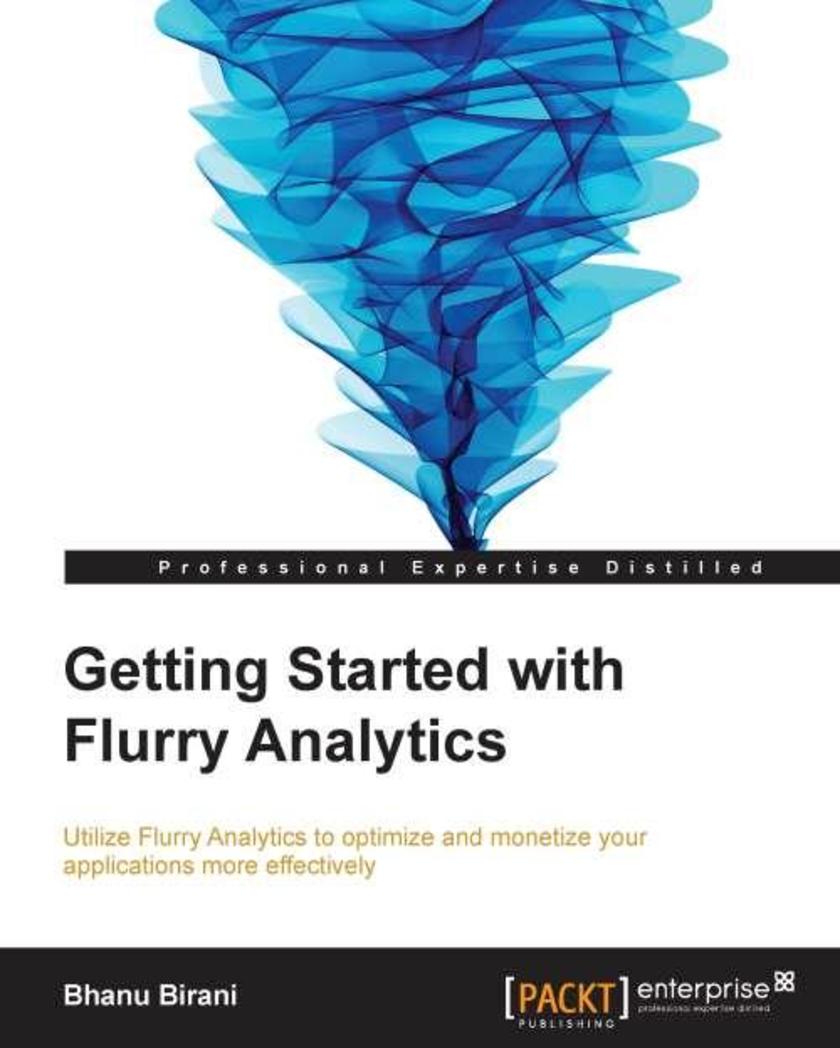
Getting Started with Flurry Analytics
¥45.77
An easy-to-follow, step-by-step tutorial full of examples and code to help you quickly get started with Flurry analytics.This book is great for developers who want to track their applications instantly using Flurry analytics and who are looking to get a good grounding in how to use Flurry for analytics in their application. It’s assumed that you will have some experience with Objective-C and a basic understanding of object-oriented programming and programming in general. You must be enrolled as an iPhone developer in order to test the example projects on your device.
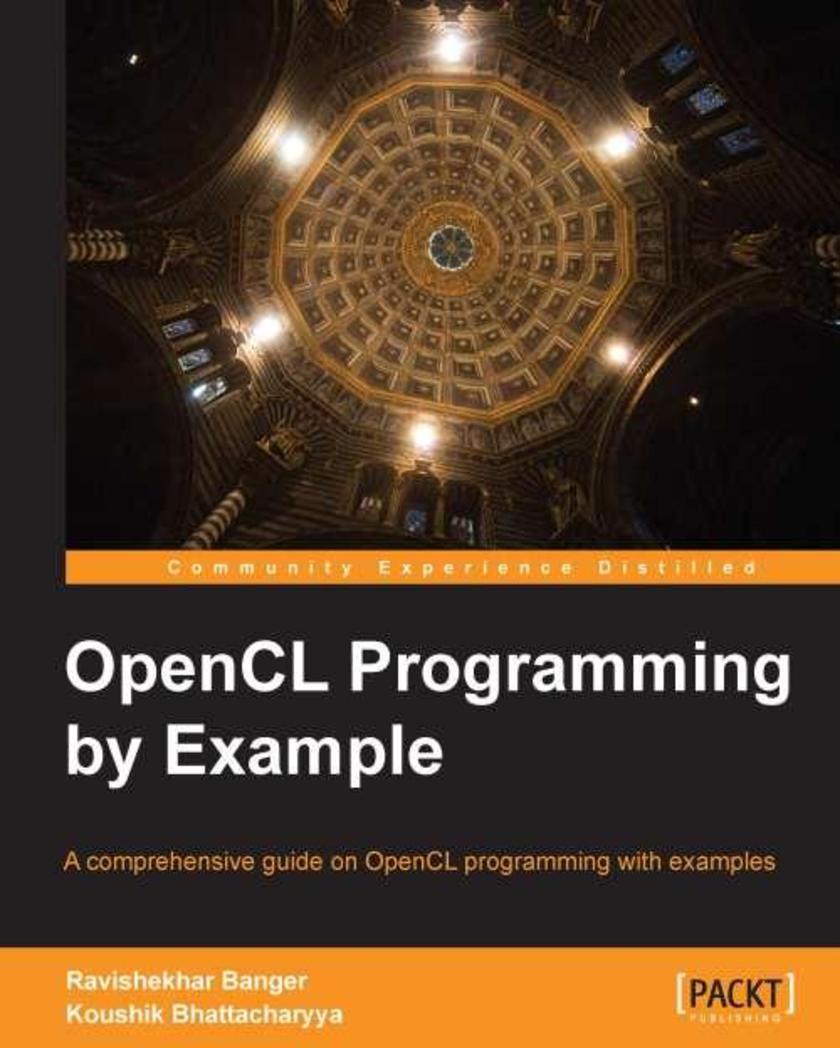
OpenCL Programming by Example
¥99.18
This book follows an example-driven, simplified, and practical approach to using OpenCL for general purpose GPU programming.If you are a beginner in parallel programming and would like to quickly accelerate your algorithms using OpenCL, this book is perfect for you! You will find the diverse topics and case studies in this book interesting and informative. You will only require a good knowledge of C programming for this book, and an understanding of parallel implementations will be useful, but not necessary.
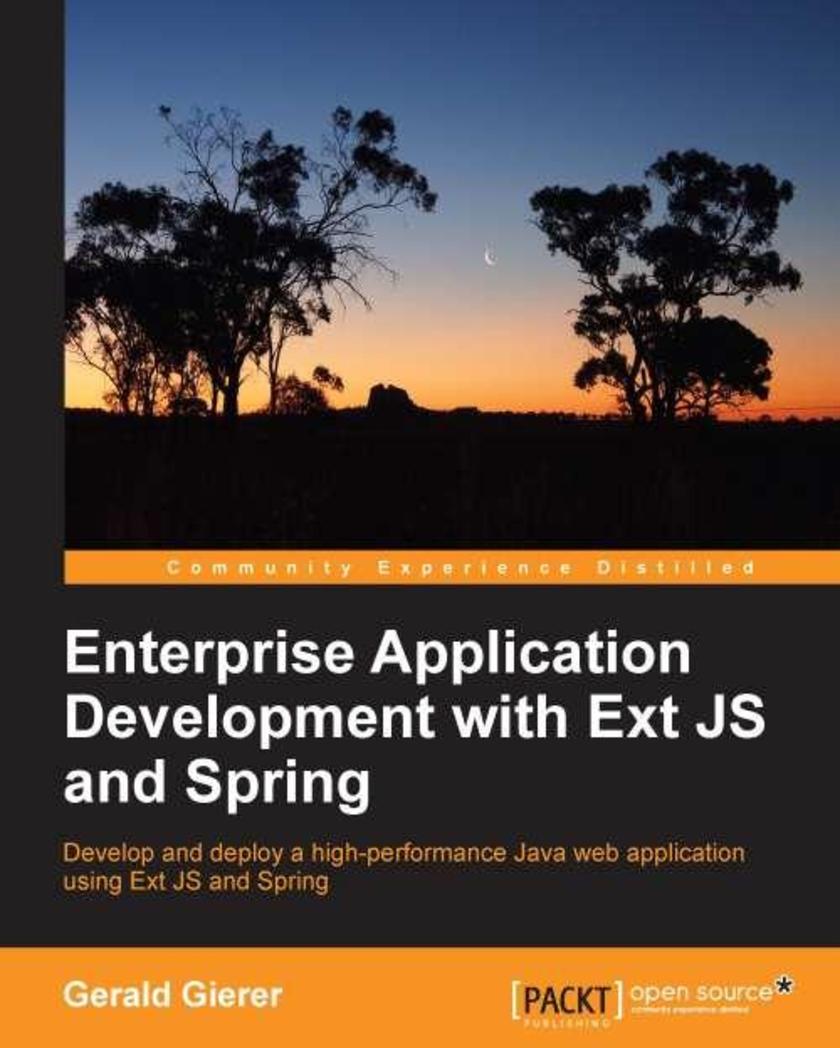
Enterprise Application Development with ExtJS and Spring
¥90.46
An easy-to-follow tutorial, that breaks down the enterprise application development journey into easy to understand phases documented by clear examples and concise explanations.If you are an intermediate developer with a good understanding of Java, JavaScript and web development concepts, this book is ideal for you. Basic ExtJS development experience, including an understanding of the framework APIs is needed by those of you who are interested in this book. Regardless of your experience and background, the practical examples provided in this book are written in a way that thoroughly covers each concept before moving on to the next chapter.
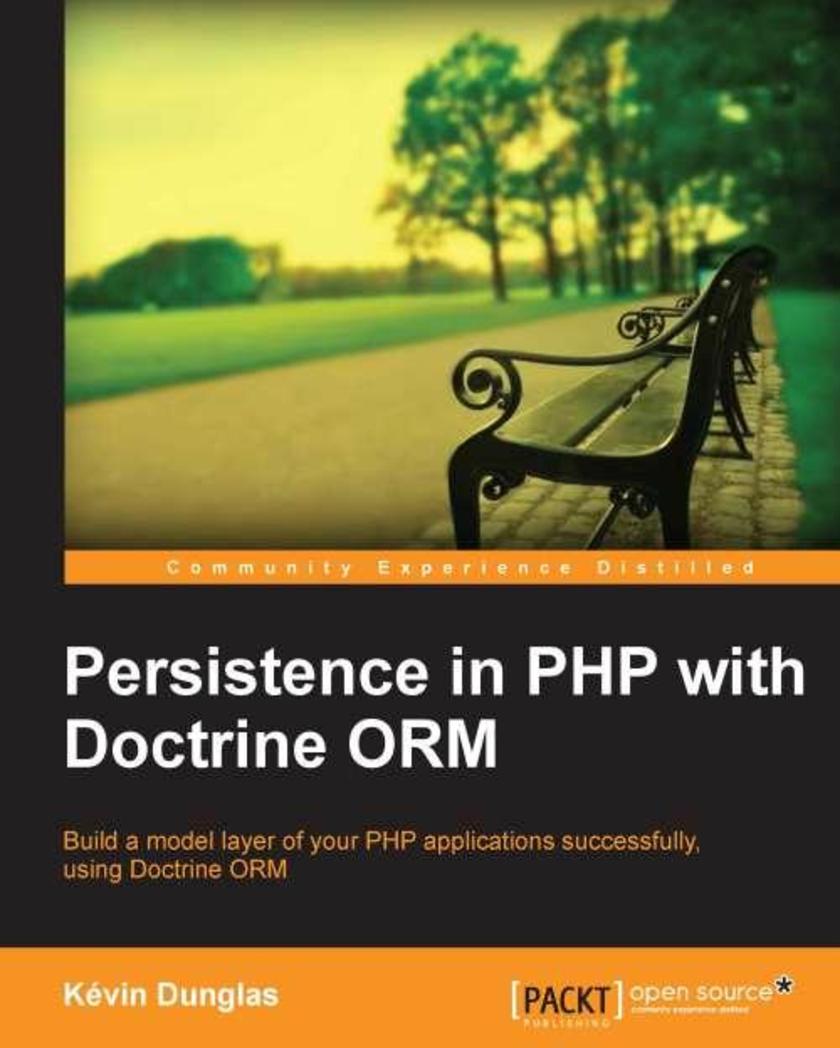
Persistence in PHP with the Doctrine ORM
¥54.49
Persistence in PHP with the Doctrine ORM is a concise, fast, and focused guide to build a blog engine with advanced features such as native queries and lifecycle callbacks.This book is primarily intended for PHP developers and architects who want to increase their skills in the field of Persistence and ORM to map the data they are working on to objects they are using in programming. Basic knowledge of databases and PDO and working knowledge of PHP namespaces is a prerequisite.




 购物车
购物车 个人中心
个人中心



